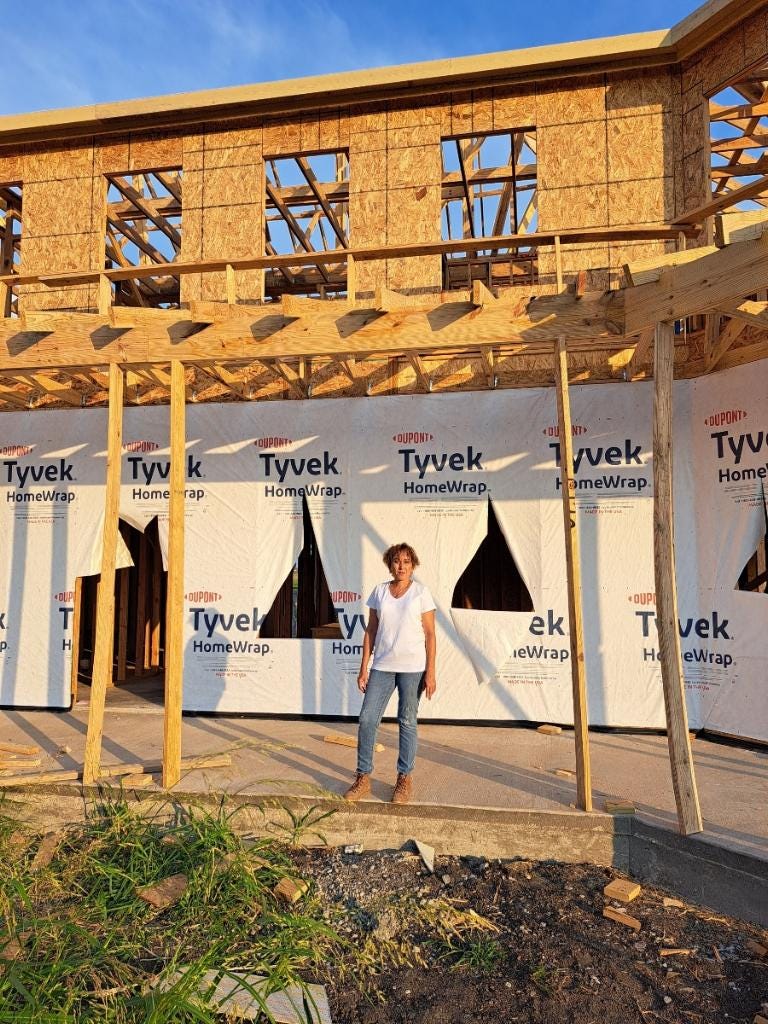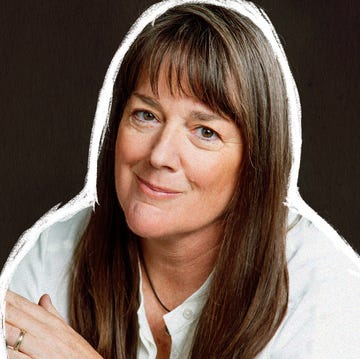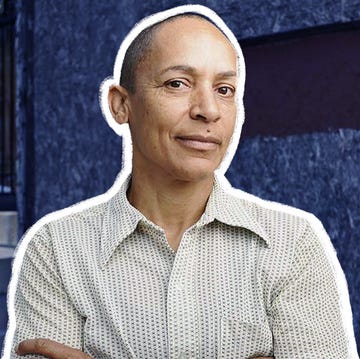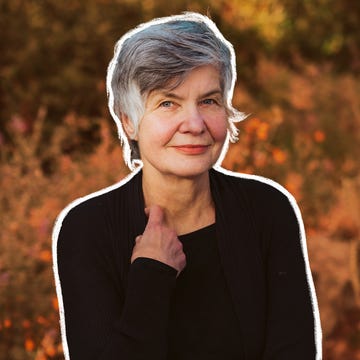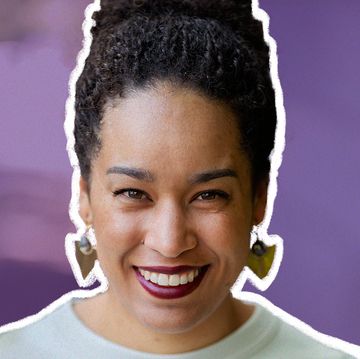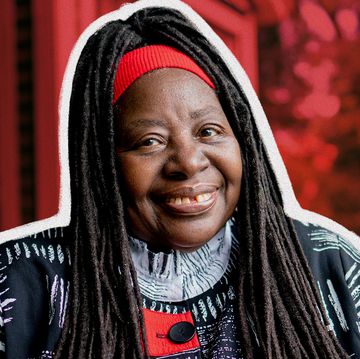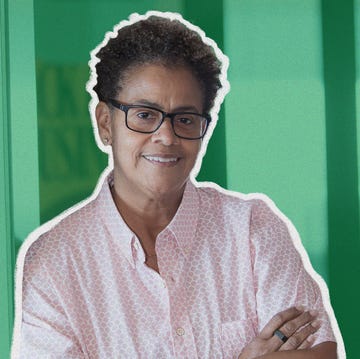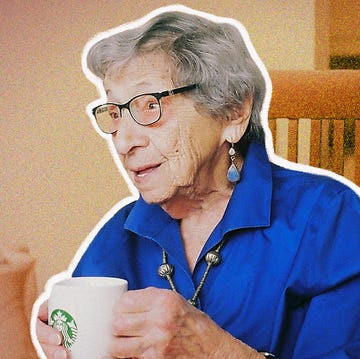In the ongoing Shondaland series Head Turners, we meet interesting women from every facet of life who are crushing it in their careers. From artists and tech mavens to titans of the boardroom, these women are breaking barriers, and they’ll share how you can too.
They usually arrived in the middle of the night. When the air was sticky and filled with swarming “kissing bugs” searching for flesh and blood, that’s when the whispers of “the Sandinistas are coming” flickered throughout Nicaraguan villages. The Sandinista National Liberation Front (FSLN) hunted down its own people, searching for dissenters who might stand up to their regime.
By the time Ligia Reyes was 18, she had enough of killing. Year after year, Reyes heard of dissenters in neighboring towns and cities being dragged out of their homes and shot in the middle of the street. One day, the whispers found their way to Reyes’ hometown of Villa de San Antonio de Pavia de Estelí. Her family escaped to a ranch owned by her father, a political activist who regularly spoke out against the Sandinista-controlled government. Dissent was not an option, so they marked him for death.
“The Sandinistas taking control of people’s properties was the motivation to leave the country,” Reyes recalls. “That’s the goal of Communism. After that, people didn’t have anything. The government began rationing food every week. Communism had officially entered the country. It was time to leave.”
When her family returned to their home, bullet casings and missile shells littered the empty neighborhood. Reyes’ family joined those who survived, sweeping the ammo into large piles, grotesque reminders of the neighbors who never returned. Reyes knew that to have any semblance of a normal life, she had to get the hell out of Nicaragua.
The entire family decided to seek refuge in another country. Options were limited. She knew very little about the United States except what she saw on television. She watched President Ronald Reagan offer Nicaraguan citizens political asylum if they could make it to America. Easier said than done.
Venturing from her home country to the U.S. border was filled with unimaginable terrors. For four trauma-filled years in the 1980s, Reyes and her family traveled without money, connections, or plans across Central America. While many of her family ultimately stayed in Mexico, the fire of freedom in the U.S. burned too strong in Reyes’ stomach to give up. Eventually, she and her brother swam across the Rio Grande and reached the border.
Six years ago, Reyes and her husband founded a home construction business in South Dallas. Today, they work seven days a week as contractors planning, organizing, and designing dozens of homes across North Texas. The couple intentionally work in Black and Latinx communities in hopes of giving people of color a chance at owning their first home.
Reyes, now a U.S. citizen, knows what it’s like to want something so bad, you’re willing to risk it all. She recently spoke with Shondaland about how her journey continues to inspire her and what advice she has when self-doubt sets in.
LEE ESCOBEDO: You went on a dangerous, life-altering journey to reach the U.S. Now that you’ve recently become a grandmother while solidifying a home construction empire, how do you reflect on your journey?
LIGIA REYES: I’m living the American dream. I work in construction and build houses alongside my husband. We independently build homes with great reputations. We started small, and now we own an established business.
LE: Why did you decide to start a construction company?
LR: For me, construction is more than a job. It’s my dream. When I entered this business, I found there was nothing I wanted to do more in life. I always knew I would work in construction.
For years, I collected papers from companies I thought I could use in the future. I had a business card on my fridge for almost six years. When we started building houses, we needed a loan company. My husband said we needed to find someone, and I told him I had a card with the name of a loan company on my fridge. Now, that company supplies the loans for our houses. I didn’t know why I kept it.
LE: What obstacles did you have to overcome as a Spanish-speaking immigrant in the male-dominated home construction industry?
LR: I needed to demonstrate that I could do this work and prove it to other people in the field, mainly men. Also, [I needed] to make people see that even though we are Latino, the homes we’re building are high quality. We sell our houses with that intention.
Many people see we’re Latinos and think the services we offer are not the same quality as others. We have to gain people’s confidence that we use good materials and know what we’re doing. We get doubted a lot. But we’ve overcome all of those perceptions in this industry. When we first started, people saw us as small-time contractors. But now, we’re no longer seen that way.
LE: What is rewarding about home construction?
LR: We have given people of all different nationalities the opportunity to own their first home. That gives us a lot of satisfaction because we know we’re making families happy, giving them a new home, and helping them reach their dreams. It encourages us to get up every day and continue making new homes.
LE: What advice would you have for other Latinas who want to break into industries where women and Latinas are underrepresented?
LR: My advice is to have a dream but also the strength and drive to reach it. Achieving your goals has no limitations just because you’re a woman. You can do anything a man does. Do not have fear. Fear has never helped a person reach their dreams. Let determination be your strength. I have always thought that being a woman doesn’t mean I can’t do something. The words “I can’t” do not exist in my dictionary.
Lee Escobedo is a Texas-based writer who has contributed to The Guardian, The A.V. Club, Surface, Re-Edition, Spike, Temporary Art Review, Terremoto, and Berlin Art Link.
Get Shondaland directly in your inbox: SUBSCRIBE TODAY


